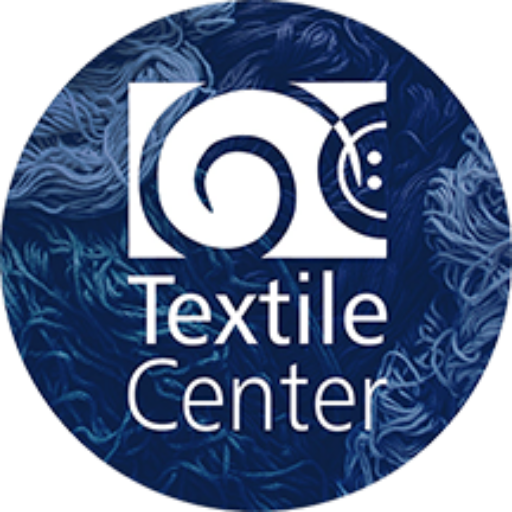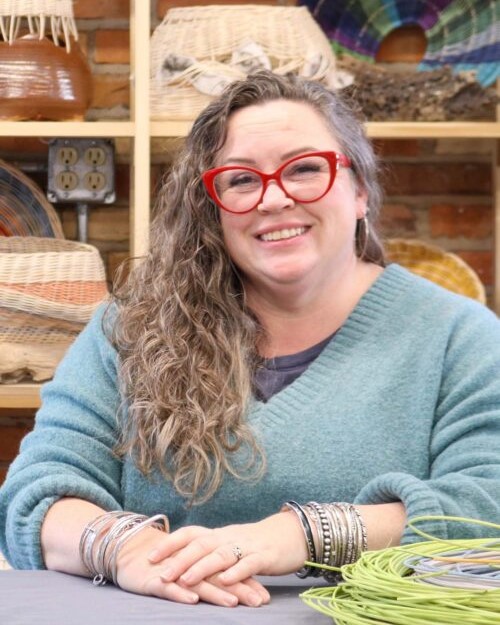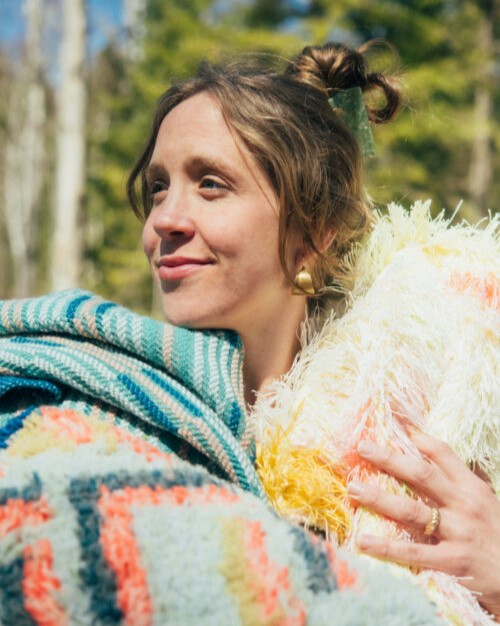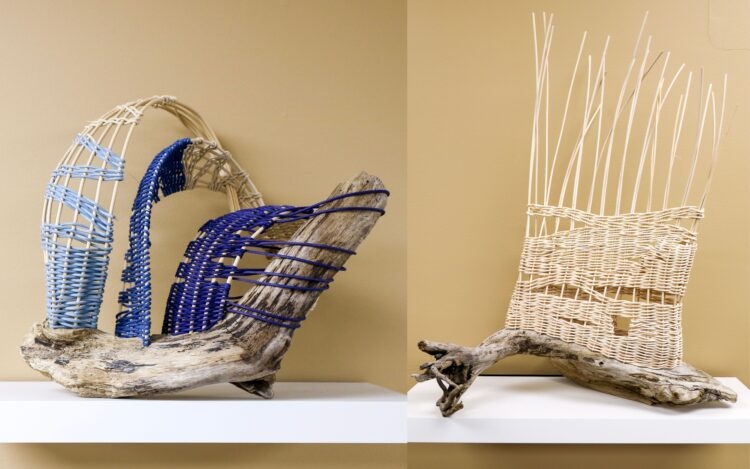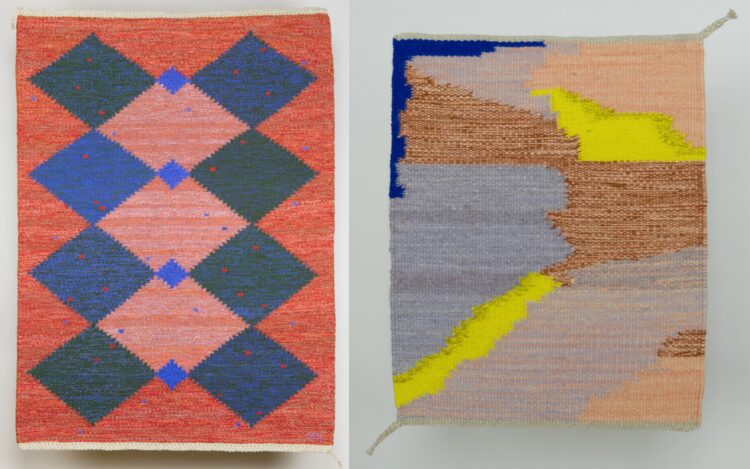- ABOUT US
- About Textile Center & Our History
- Visit Textile Center
- Declaration of Anti-Racism
- Land Acknowledgment
- Staff + Board
- Guilds and Special Interest Groups
- Textile Center Community Partners
- Job, Internship & Volunteer Opportunities
- Auction Item Request Form
- Textiles on the Town (ToT) Newsletter
- Spun Gold Awards
- Official Documents
- EXHIBITIONS
- EDUCATION
- Take a Class
- Art Speaks | Artist discussion series
- Craft Night | Monthly social crafting events
- Join our Book Club
- Fellowship Opportunities
- Book a Private Event at Textile Center
- Book an Offsite Class
- Join our Members Makerspace
- Visit our Dye Garden
- Use the Dye Lab
- Learn about Textile Tours
- Teach with us
- SHOP
- LIBRARY
- DONATE
- MEMBERSHIP
- EVENTS
- VIDEO LIBRARY
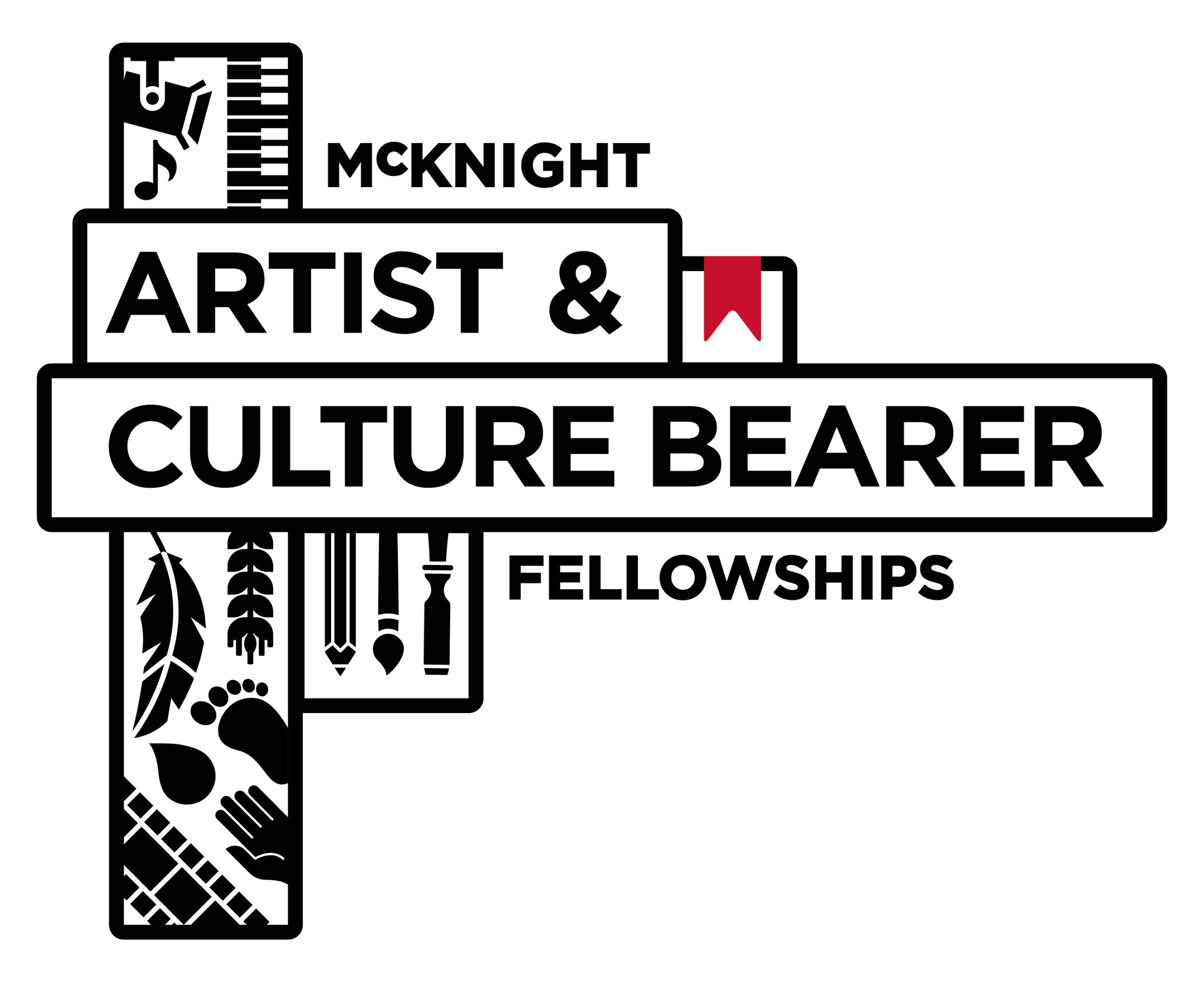
Congratulations to
Fellowship Period:
Fellowship Exhibition at Textile Center:
Shannon Lucas Westrum
Shannon Lucas Westrum is a basketry artist whose work fuses locally sourced materials with rattan, to explore a blend of modern and traditional techniques. She began her practice in the late 1990s through community education classes and fiber art guilds, later expanding her studies with international basket makers. Highlights include a pilgrimage to Ireland to study with Joe Hogan and a 2018 residency at Shankill Castle in Kilkenny.
Westrum has received two Creative Individuals Grants from the Minnesota State Arts Board (2021, 2023), two Arts Education Grants (2024, 2025), and a Region 2 Arts Council Fellowship (2018). Her work has been featured in group exhibitions across Minnesota, including the Armory Arts & Event Center in Park Rapids and the MacRostie Art Center in Grand Rapids. She also teaches basketry workshops in partnership with regional galleries, guilds, and libraries.
When not in her studio in Bemidji, she can be found hunting for grasses, rushes, bark and antlers, or beachcombing nearby in search of rocks and driftwood.
shannonlucaswestrum.com
RECENT and UPCOMING events and press:
On Lakeland PBS, 10/2/25, In Focus: Bemidji Basket Artist Hosts Broom-Making Class to Kick Off Fall | Lakeland News
Join the Bagley Area Arts Collaborative for an Afternoon with Shannon Lucas Westrum, 2:30 pm, Thursday, September 17, 2025, Bagley, MN
Wine and Cheese Open House with Featured Basketry Artist, Pinecone Press Citizen, Longville, MN
Taste of the Arts Tour, Saturday May 24 and Sunday May 25, 2025, Bemidji, MN. Click HERE for Map and Schedule.
Life and Work with Shannon Lucas Westrum of North Bemidji, Voyage Minnesota, April 2, 2025
Shannon Lucas Westrum is Interweaving Art and Community, April 2, 2025, Stella Dolan, bsualumni.org
Christine Novotny
Christine Novotny weaves vibrant and hearty textiles that explore the intimacy of labor, materiality, and the interplay of color within woven processes. Her practice investigates how colors interact, shift, and form unexpected chromatic kinships in woven form. Using bundled yarns and knotted techniques on her floor loom, she approaches weaving with a painterly sensibility, integrating bold shapes and atmospheric color blending.
Novotny holds a BFA in Painting from Indiana University and completed a two-year residency at North House Folk School, where she explored weaving and honed her craft. She has been awarded grants from the Minnesota State Arts Board and the Arrowhead Regional Arts Council, and an Artist Fellowship at the American Scandinavian Foundation in New York. Her work has been exhibited widely across Minnesota, including a recent solo exhibition in the Artist Studio at the American Swedish Institute in Minneapolis. She lives and works in Grand Marais.
(Photo by Wolfskull Creative)
christinenovotny.com
RECENT and UPCOMING events and press:
Christine’s work is featured in Nordic Echoes- Traditions in Contemporary Art, April 5 – August 2, 2025, Scandinavia House, New York, NY
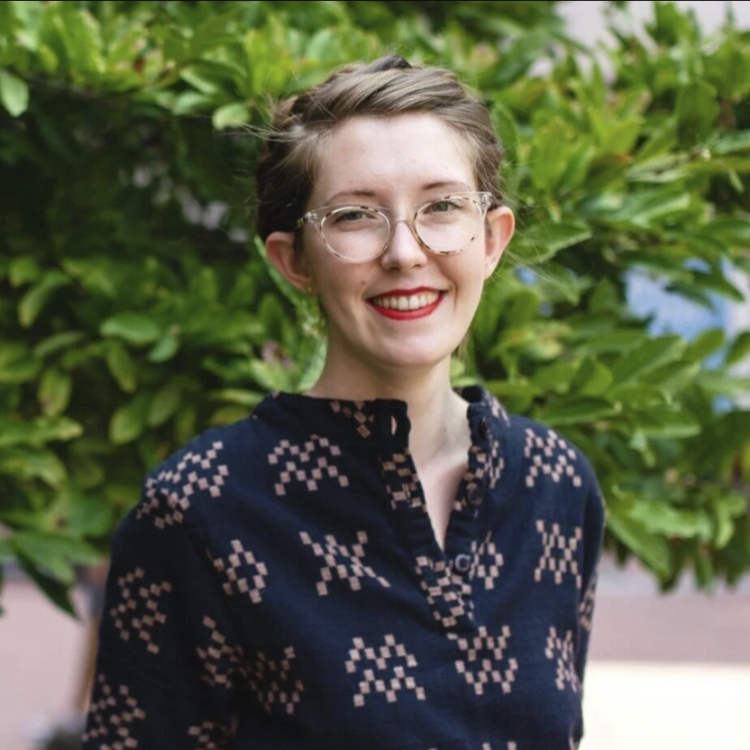
Caroline Kipp
Caroline Kipp (she/they) is a curator, artist, and art historian whose work centers on contemporary art, textiles, and craft. She holds a BFA in Fibers from the Massachusetts College of Art and Design, an ALM from Harvard University, and is a Ph.D. student in Art History at the University of Maryland. From 2019–2023, Kipp served as Curator of Contemporary Art at The George Washington University Museum and The Textile Museum in Washington DC. Previously, she was Curatorial Associate at the Museum of Fine Arts, Boston, where she curated the Farago Gallery exhibitions, co-curated Beyond the Loom: Fiber as Sculpture/Subversive Threads, and oversaw the contemporary decorative arts collection and other exhibit projects. She serves on the board of the James Renwick Alliance for Craft.
carolinekipp.com
@caroline_kipp
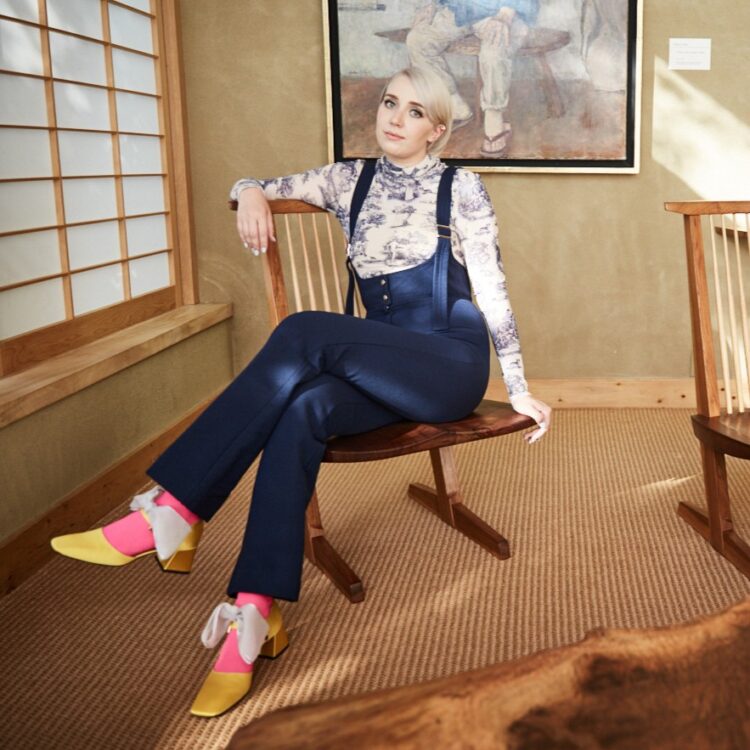
Sarah Darro
Sarah Darro is a curator, writer, and visual anthropologist working at the intersection of contemporary art, craft, and design. She is the Chief Curator and Exhibitions Director at Houston Center for Contemporary Craft, where she positions the museum as a living laboratory fostering material intelligence, cultural dialogue, and social transformation. Her exhibitions and research explore craft as a critical discipline entwined with systems of labor, care, and movement. Recent projects include THIS SIDE UP, which cast art handling as craft practice, and an extended version of Designing Motherhood, which examined maternal labor as an analog to craft. Recent curated (solo) exhibitions include Sonya Clark, Georgina Treviño, Max Adrian, and Cannupa Hanska Luger. She has served as a juror and guest curator for institutions including the Smithsonian, Pew Charitable Trusts, and the American Craft Council. Darro holds an M.A. from the University of Oxford and B.A. from Barnard College of Columbia University.
sarahdarro.com
@sarahdarro

Jen Padgett
Jen Padgett is the Windgate Curator of Craft at Crystal Bridges Museum of American Art in Bentonville, Arkansas. Her role focuses on advancing craft across the museum through acquisitions, exhibitions, research, and public engagement. She joined the curatorial team at Crystal Bridges in 2017, specializing in modern art from the 1900s to 1950s. Padgett has organized reinstallations of the museum’s modern art galleries and several exhibitions including Crafting America (co-curated with Glenn Adamson) and Seeing One Another: New Views on the Alfred Stieglitz Collection. She is part of a cross-departmental team shaping the expansion of the museum’s collection galleries, opening June 2026. Various positions and fellowships at other museums include the Philadelphia Museum of Art, Metropolitan Museum of Art, and Amon Carter Museum of American Art. She received her MA and PhD in Art History & Archaeology from Washington University in St. Louis and BA in Art History and English from the University of Notre Dame.
@jampageant
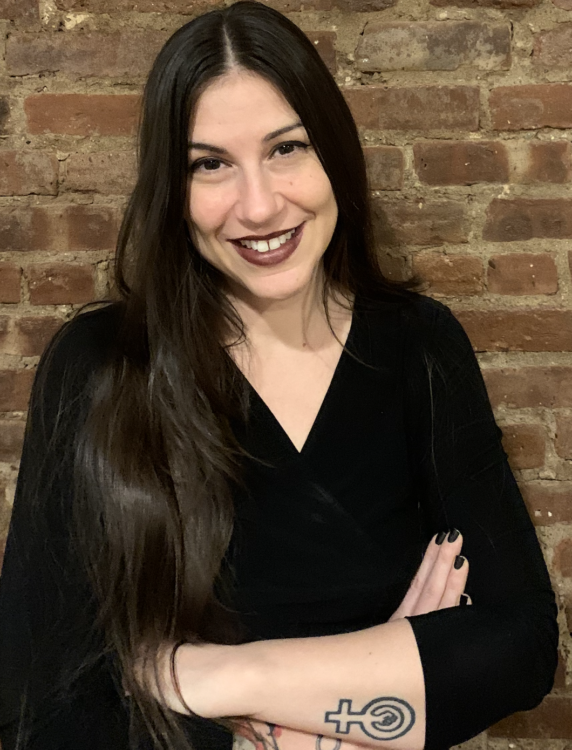
Nicole Archer
Nicole Archer, PhD, is an Associate Professor at Montclair State University’s Department of Art and Design and an affiliated faculty member of the university’s Women, Gender, and Sexuality Studies program. She also serves as an Executive Board Member and the Vice President of Publications for the College Art Association. Her research focuses on the politics of contemporary art and material culture, with an emphasis on fiber-based practices, and has been published in various journals, edited collections, and catalogs, including: Criticism: A Quarterly Journal for Literature and the Arts; The Journal of Modern Craft; The Radical History Review; Surface Design Journal; Textile: The Journal of Cloth and Culture; Trap Door: Trans Cultural Production and the Politics of Visibility (published by the New Museum + MIT Press); Where are the Tiny Revolts? (published by the CCA Wattis Institute for Contemporary Arts + Sternberg Press); Women and Performance: A Journal of Feminist Theory. Archer’s first book, Looming Violence: Textiles and the Politics of Discomfort in the Contemporary United States, is forthcoming (Manchester University Press).
narcher.com
nicole archer- montclair.edu
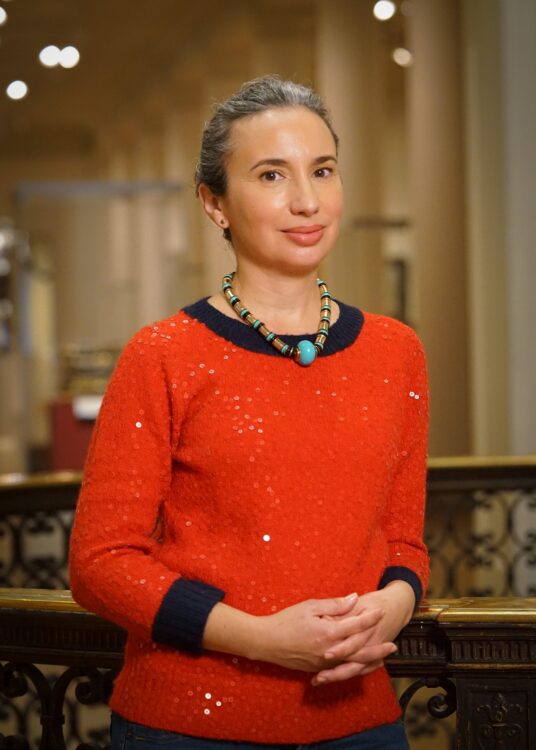
Nicole LaBouff
Nicole LaBouff, PhD, is Curator of Costume and Textiles at the Los Angeles County Museum of Art. Prior to that, she was Associate Curator of Textiles at the Minneapolis Institute of Art. LaBouff has over 25 years of experience in major encyclopedic art museums with expertise in collections development, exhibitions, and public programs. Her scholarly expertise in history and art history includes early modern Europe, gender/women’s history, and history of science/natural history. She received her PhD in History from the University of California, Irvine with a dissertation on Elizabethan embroidery and women’s domestic work, focusing on furnishing textiles, interior spaces and architecture, and completed degrees at the Courtauld Institute of Art (MA, History of Dress), Cambridge University (MPhil, Archaeology), and the University of California, Berkeley (BA, Anthropology).
lacma.academia.edu/NicoleLaBouff
humanities.uci.edu/news/nicole-labouff-finds-her-perfect-fit
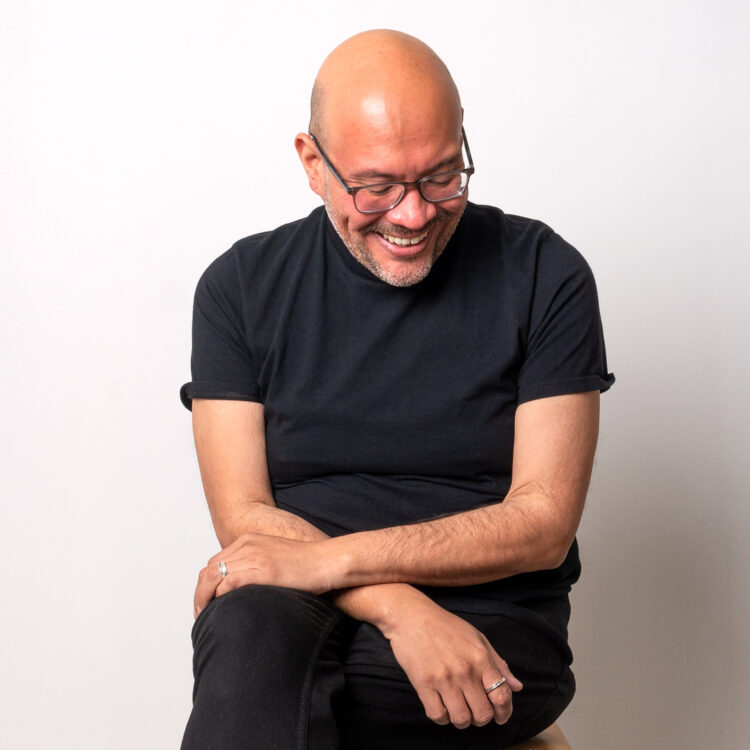
José Santiago Pérez
José Santiago Pérez is an artist and educator based in Chicago. He is currently a Visiting Lecturer in Sculpture and Visual Thinking at the University of Pittsburgh, and has held teaching appointments in the Art Department at Colorado College and in the Fiber and Material Studies Department at the School of the Art Institute of Chicago. Recent residencies and awards include Regional Artist Residency at Contemporary Craft (2025), Surf Point Foundation Artist Residency (2025), Fiber Fellowship at Colorado College (2024), Illinois Arts Council Agency Artist Fellowship Finalist in Craft (2024), Lunder Institute for American Art Residential Residency (2022), and HATCH Residency at Chicago Artists Coalition (2019-2020). Their work has been supported by an Illinois Arts Council Agency grant, an Individual Artist Program grant from the City of Chicago, and a Chicago Artists Coalition SPARK grant. Santiago Pérez’s work has been presented in solo and group exhibitions across the country, and features and reviews of work have appeared in Artforum, Basketry+ Magazine, Sixty Inches from Center, Newcity Art, and the Archives + Futures Podcast. He received an MFA from the School of the Art Institute of Chicago.
josesantiagoperez.com
@josesantiago.p
Fiber art is thriving in Minnesota, and the field’s growth as an artistic discipline now includes the McKnight Artist Fellowships Program, which provides two $25,000 fellowships, awarded each year to individual midcareer fiber artists living and working in Minnesota.
In addition to the $25,000 unrestricted award and public recognition in support of their studio work and practice, McKnight Fiber Artist Fellows receive:
- Critiques/studio visits with curators, mentors, and critics from the field.
- Exhibition at the end of the fellowship period in the galleries at Textile Center.
- Professional photographic documentation of work at the end of the fellowship period.
- Participation in a public discussion or presentation of their work and creative practices.
- Professional development support, such as attending conferences, workshops, and marketing advice for their work.
- Consultation sessions from artist career consultants at Springboard for the Arts on topics of their choice, related to the arts and creative practice.
- Participation in a 1 – 2 week artist residency in partnership with McKnight and Artist Communities Alliance.
- Membership to Textile Center and access to Textile Center’s resources, including library of more than 32,000 books and periodicals, state-of-the-art dye lab, and artisan shop opportunities.
The intent of the McKnight Fellowships for Fiber Artists is to recognize and support talented Minnesota fiber and textile artists whose work is of exceptional artistic merit. These fellowships are in support of individual artists who are at a career stage beyond emerging. Fiber Artists, as defined for the purposes of this fellowship, are artists who use textile and fiber arts materials, processes, histories, traditions, and/or sensibilities in their artistic practice throughout the conception, execution, and resolution of their work. The fellowships are funded by the McKnight Foundation and administered by Textile Center.
ABOUT THE MCKNIGHT ARTIST FELLOWSHIPS PROGRAM
Founded on the belief that Minnesota thrives when its artists thrive, the McKnight Foundation’s Arts & Culture program is one of the oldest and largest of its kind in the country. Support for individual working Minnesota artists has been a cornerstone of the program since it began in 1982. The McKnight Artist Fellowships Program provides annual, unrestricted cash awards to outstanding mid-career Minnesota artists in 15 different creative disciplines. Program partner organizations administer the fellowships and structure them to respond to the unique challenges of different disciplines. Currently the foundation contributes about $2.8 million per year to its statewide fellowships. To learn more about McKnight Artist Fellowships, visit: mcknight.org/artistfellowships.
ABOUT THE MCKNIGHT FOUNDATION
The McKnight Foundation, a Minnesota-based family foundation, advances a more just, creative, and abundant future where people and planet thrive. Established in 1953, the McKnight Foundation is deeply committed to advancing climate solutions in the Midwest; building an equitable and inclusive Minnesota; and supporting the arts in Minnesota, neuroscience, and international crop research. mcknight.org
A focus on racial equity is at the heart of the McKnight approach to funding. Along with Textile Center, our organizations value diversity and equity, seeking to be inclusive and accessible to all applicants. We welcome and encourage applications from artists representing diverse cultural perspectives.
Christine Novotny, 2025 McKnight Fiber Artist Fellow
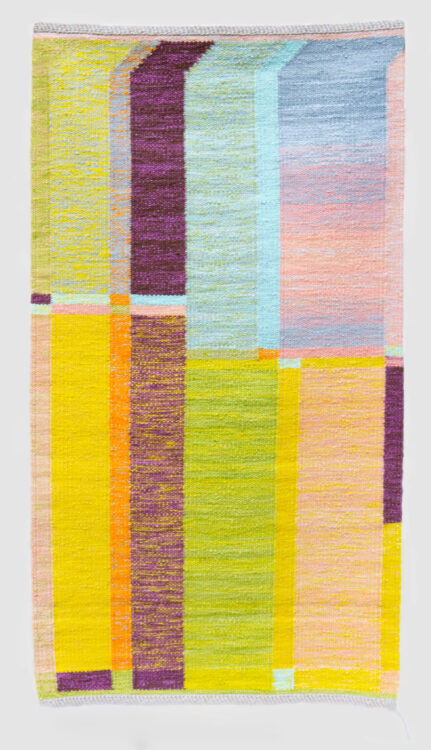
“Roses in a Broken Vase”
Christine Novotny weaves vibrant and hearty textiles rooted in a curiosity about color, exploring the linear process and documentation of weaving on a floor loom. Many of her pieces are influenced by techniques in Scandinavian tradition, including rölakan tapestry and rya knotting techniques. Her designs are guided by the physical practice of different woven processes, finding bold, graphic forms in tapestry and loom-controlled designs, and sensitivity and atmospheric movement through the technique of rya pile weaving.
Her artistic foundation began in painting with oils and watercolors. Along with years of life drawing, this helped hone her eye to notice varied local color and chromatic moments that are difficult to define. When she began weaving, she explored by optically blending colored yarns. Interlacing and bundling multiple hues in the warp and weft gave her a new way to incorporate chromatic sensitivity and nuance. She moved toward experimentation and surprise, exploring not if colors work together, but how they work together. Her colors derive both from observations in her production work and from her sketching practice, using markers and colored pencils to layer color. Vibrant colors pair with contrasting tints and tones to convey emotional energy. These colors relate to one another through her use of abstract imagery, open to interpretation for all who interact with the work.
Novotny is intrigued by the ways that weaving can be documentary in its linear format. While painting, she worked by moving around the canvas, adding and subtracting as needed. This resulted in an ever-changing piece, and an unnerving freeform approach that never felt “finished”. In floor loom weaving, the preparation begins long before the imagery is woven. The handwork is both methodical and intimate. She starts at the beginning and works towards the end, combining bits and pieces of yarn, disparate and harmonious colors, new yarns and old ones. Whether the weft is composed of a knot of many colors or a bundle of several yarns, each inclusion is a choice, met with chance as it interacts in repetition. Working linearly on the floor loom applies a creative limiting factor, where a shift in design can be pinpointed to a moment in time that happened after all the moments before it. This allows the viewer to connect with the linear evolution of the work.
These documentary concepts are explored in Roses in a Broken Vase. This piece began with a sketch in her early pregnancy, was woven through her third trimester, and ultimately finished after the birth. The colors are enticing and fantastical, like memories in Technicolor. At the top of the piece, the reliable vertical lines all shift unexpectedly to the right. The precision required to make this piece pairs with spontaneity, acknowledging the capacity of a piece to hold a moment from her own life, and our collective lives simultaneously.
Weaving with rya knots introduced a tactile depth to her designs and materials. Rows of knots layer on top of one another, each often a unique blend of colors allowing her technique to be more painterly For Sonia and A Marvel are examples. In For Sonia, the knots follow a geometric grid, referencing a design from artist Sonia Delaunay’s line of printed fabrics from hand-drawn designs. While made up mostly of straight lines and right angles, the edges loosen with the soft tails of the woolen knots. In A Marvel, the linen and mohair knots illuminate the sensitively blended hues of pinks, peaches, and corals. Using linen fibers is a way that Novotny recontextualizes the Rya technique. Lustrous, thin yarns catch light differently, appearing more like soft pine needles than lush pile carpet.
As Novotny comes off of a 2024 solo exhibition at the American Swedish Institute in Minneapolis, she plans to continue constructing color with hand-dyed yarns. She currently has yarn from Minnesota fleeces being milled to use in the coming year, as she plans to continue build depth of color and texture in her work.
2025
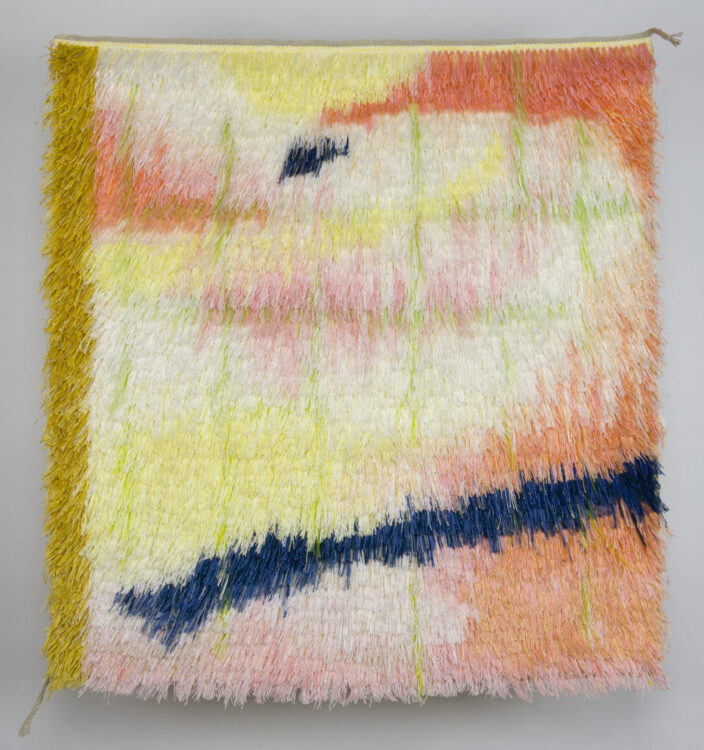
“A Marvel”
For more about Christine Novotny, visit ChristineNovotny.com
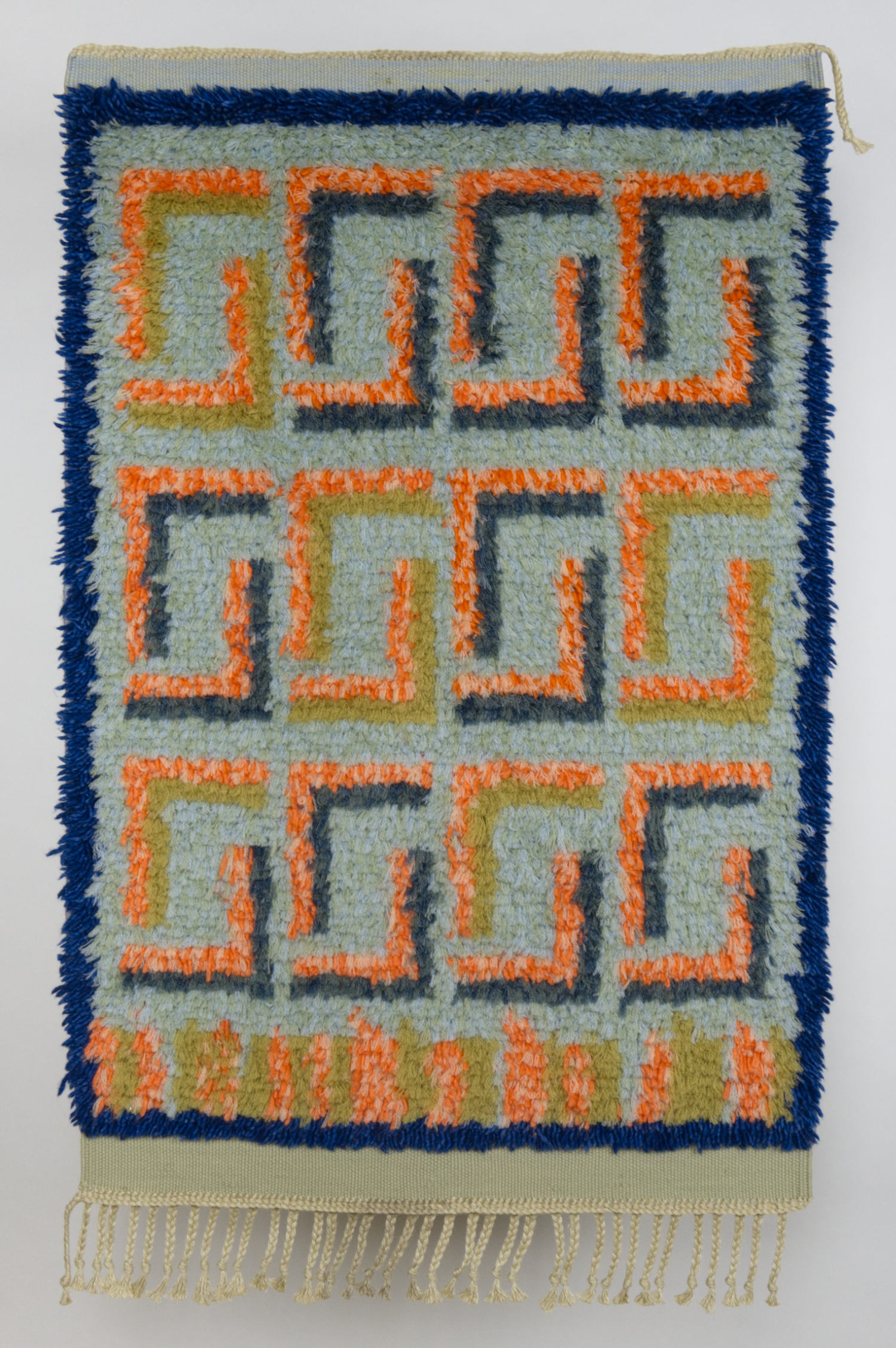
“For Sonia”
Shannon Lucas Westrum, 2025 McKnight Fiber Artist Fellow
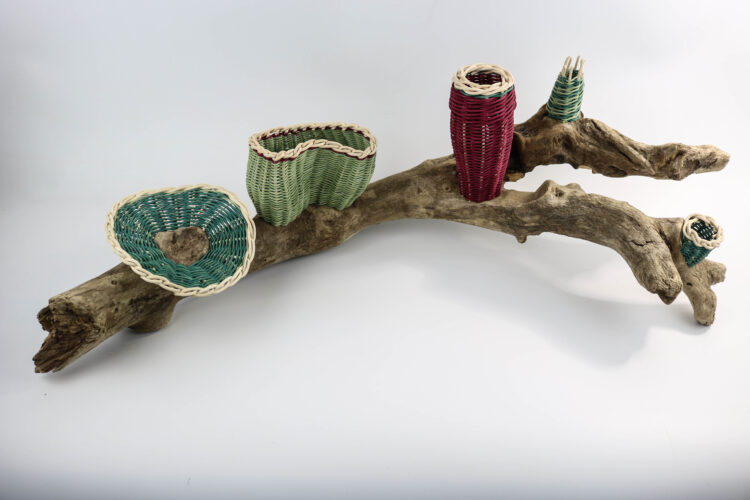
Shannon Lucas Westrum’s love of texture and fibers began in childhood, when she convinced an elderly neighbor to teach her to crochet. She spent countless hours creating with yarn, wood, beads, paper, and leather—weaving materials and techniques together and continually exploring. In her early twenties, she began serious practice as a basket maker through community education programs and fiber arts guilds. When Westrum became a mother, she divided her time between work and raising her daughters, and her art took an intermission. Five years later, her young daughter looked up at her and doubted her claim to have made the basket in her hands—having never seen her create anything in her entire life. That moment inspired her to re-embrace her artistic self, not only for her own sake but so her daughters could understand what could be made with their hands together.
Westrum returned to weaving at home, developing her own style and seeking opportunities to learn wherever she could find them. Her work grew into a blend of cultures, traditions, and technical skills. Living surrounded by Native lands, she had grown up learning Ojibwe art in school as the only form of art instruction available besides drawing and painting. As Ojibwe traditions were not hers culturally, she did not want to work within them and instead began a pilgrimage of sorts, learning traditional European weaving techniques and materials from weavers from the United States, Spain, and Denmark.
Her work was recognized with awards—a fellowship from the Region 2 Arts Council and a residency at Shankill Castle—within months of each other. This funding allowed her to travel to Ireland, where she worked with Joe Hogan—renowned basket maker, artist, and author on traditional Irish basketry—and his son Ciaran, who teaches willow weaving near Galway. She describes her time weaving with the Hogan’s and basket makers from across Ireland, making willow skibs and other traditional forms, as moments of “pure bliss.”
Following this, she worked at Shankill Castle in Kilkenny in the studio of painter Elizabeth Cope and studied with German basket maker Heike Kahle. While the cultural traditions of Europe are only ancestrally hers, their technical foundations became integral to her practice. Through the years of study and research that have followed, Westrum has forged her own style and continues to explore the fusion of modern and traditional techniques, combining manufactured and locally sourced natural materials in her art basketry.
Her artistic practice is also a family endeavor. It was not unusual for excursions with her teenagers to involve beachcombing along Lake Superior for driftwood and stones or gathering grasses, barks, antlers, and rushes from her late grandfather’s farm near Lake Itasca. For Westrum, sculptural inspiration often begins with these found natural forms and objects. It could be the curve of an antler or a burl in a willow root that activates a piece and dictates its shape, flow, and color. These natural elements are combined with primary weaving materials such as round reed (rattan) and willow to create both sculptural works and practical vessels.
Westrum’s art has evolved to embody dialogue between dualities—tradition and innovation, nature and craft, family and community. A recent exhibition that reflected life in the north woods exemplified a collaboration of texture, color, symbolism, and feel, with some pieces sculptural and symbolic, while others were infused with the swirling colors of the environment. With the support of her community, she harvested an abundance of natural materials and completed the works using cords made from daylilies, irises, chives, and rhubarb skins, as well as cattails, sawgrass, and swamp grasses—all weaving themselves into her vision. Each piece became a unique sculptural expression, deeply rooted in place, material, and story.
2025
For more on Shannon’s work, visit Shannon Lucas Westrum
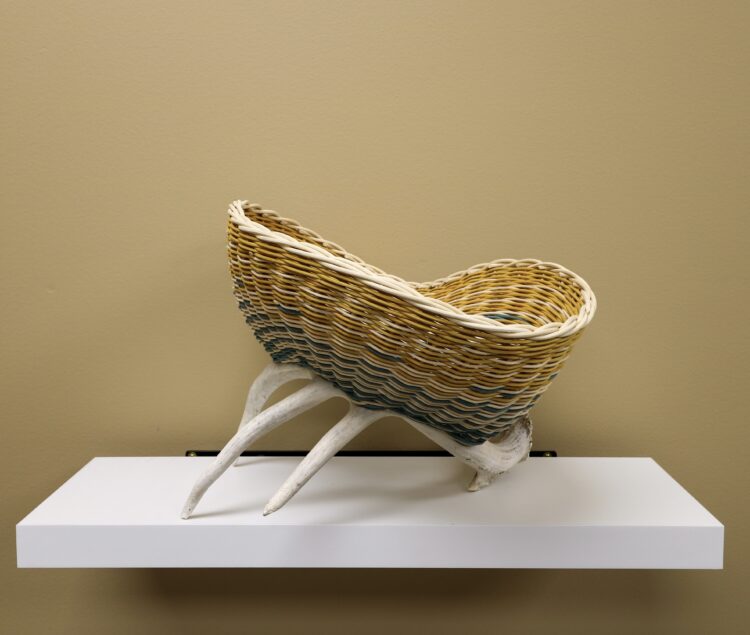
“Autumn Begins” 11″ x 15″ x 11.5″
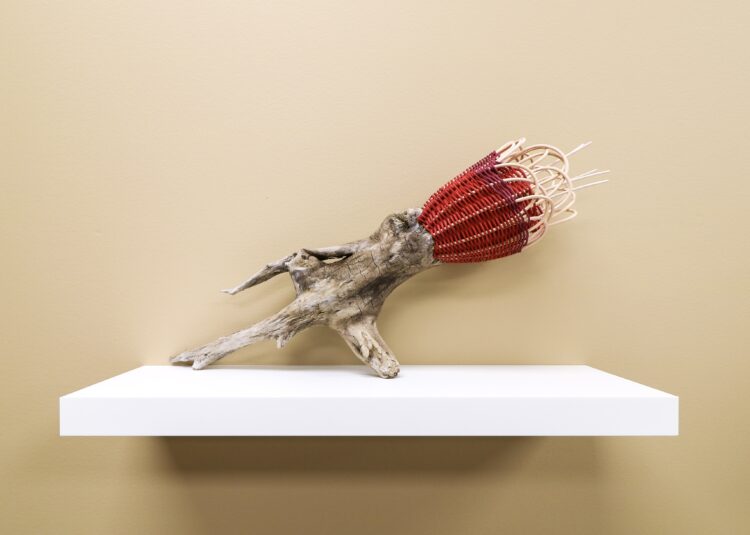
“Rose” 8.5″ x 24″ x 6″
